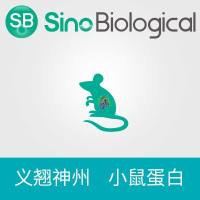Conventionally, monoclonal antibodies (MAbs) are generated by fusing B cells from an immunized animal with myeloma cells from the same species (1 ). Several murine MAb have already been employed for in vivo diagnosis and therapy, including Ber-H2 which recognizes the human CD30 molecule with high specificity and affinity (2 ). CD30, a member of the nerve growth factor (NGF) tumor necrosis factor receptor (TNFR) superfamily (3 ), is strongly expressed on the pathognomonic Hodgkin (H) and Reed-Sternberg (R-S) cells of Hodgkin’s lymphoma (4 ) and various non-Hodgkin lymphomas of either T- or B-cell type origin (5 ). Its reaction pattern in normal lymphoid tissue is restricted to a population of blastoid cells located around B-cell follicles and at the rim of germinal centers (2 ). Consequently, Ber-H2 has been utilized as an immunotoxin by conjugating the antibody to the ribosome-inactivating toxin Saporin to treat four patients with refractory Hodgkin’s lymphoma (6 ). However, despite remarkable tumor reductions of up to more than 75% were achieved after administration of one single dose of the reagent, patients developed an immune response against both the rodent immunoglobulin and the toxin moiety, precluding further application of the immunotoxin (6 ). In order to fully preserve the specificity of Ber-H2 and to overcome the aforementioned disadvantages, we have generated a chimeric mouse/human antibody.
![PARP9/PARP9蛋白/ADP-ribosyltransferase diphtheria toxin-like 9
B aggressive lymphoma protein
Poly [ADP-ribose] polymerase 9蛋白/Recombinant Human Poly [ADP-ribose] polymerase 9 (PARP9), partial重组蛋白](https://img1.dxycdn.com/p/s14/2024/0807/931/4874189879496701281.jpg!wh200)





